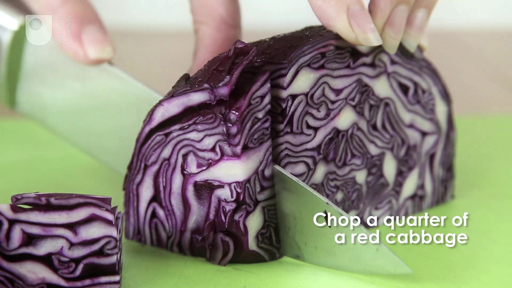2.2 Measuring pH
The next activity gives you the opportunity to measure pH by looking for a change in colour of a solution that you can make from red cabbage. First, watch the following video to see how to carry out the experiment.

Activity 2 Using an indicator to test pH
- a.Chop up a quarter of a red cabbage.
- b.Place the chopped cabbage in a blender with 250 ml of water and blend well.
- c.Strain the indicator liquid and pour into sample glasses.
- d.Clearly label each glass before adding the samples you wish to test.
- e.Test samples that you think may be acid or alkali.
Which colours indicate that an acid is present and which colours indicate an alkali?
Try other substances from the kitchen, such as washing-up liquid, liquid soap, dishwasher powder (be especially careful not to get that on your hands), cola drink, tomato ketchup, etc. You can probably think of many more.
Write two or three sentences in the box below to describe what your tests discovered. Click ‘Save and Reveal Discussion’ when you are satisfied with what you have written.
Answer
We mentioned using an alkali to neutralise an acid (in antacid medicines). You could try that for yourself now. Take one of your acid solutions (lemon juice, for example) with the indicator, and start adding an alkali (such as baking powder or an antacid tablet). You should see the colour change from the acid colour, through the neutral colour, to the alkali colour. You may also see a lot of fizzing as carbon dioxide is released.
